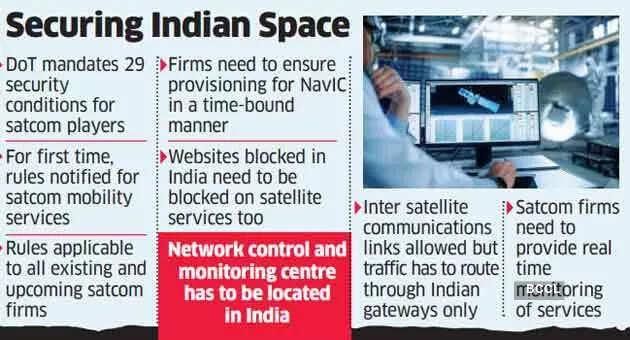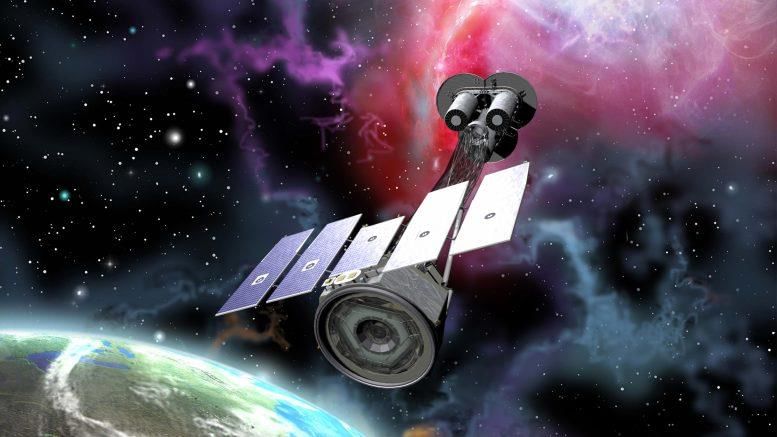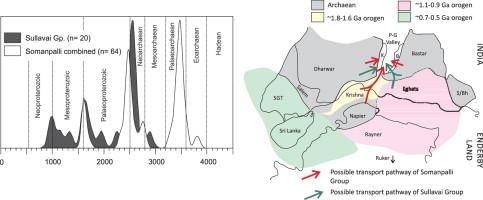UPSC Daily Current Affairs: 7th May 2025 | Current Affairs & Hindu Analysis: Daily, Weekly & Monthly PDF Download
GS2/Polity
Civil Services in India: Challenges and the Need for Reform
Why in News?
On Civil Services Day (April 21, 2025), Cabinet Secretary T. V. Somanathan emphasized the vital role of civil services in upholding and enhancing democracy in India. He recognized both their significant contributions and the persistent challenges that undermine their effectiveness.
- The civil services in India are at a crucial point, necessitating urgent reforms.
- Challenges such as political interference and corruption threaten the integrity of civil services.
Additional Details
- Evolution and Role: Civil services in India originated in 1858 with the establishment of the Indian Civil Service aimed at managing administrative functions through a merit system. Post-independence, the Union Public Service Commission (UPSC) took over this role, ensuring merit-based recruitment.
- Key Functions: Civil servants play a central role in conducting free and fair elections, advising on policy formulation, and implementing welfare schemes, among other responsibilities.
- Structural Framework: India utilizes a merit-based system for civil service recruitment, contrasting with the spoils system that historically existed in the U.S. However, political interference has begun to compromise this system.
Major Challenges Facing Indian Civil Services
- Erosion of Neutrality: There is a growing perception that bureaucrats are aligning with political interests, which undermines their expected impartiality.
- Political Interference: Frequent and arbitrary transfers of officers hinder their independent functioning and decision-making.
- Lack of Domain Expertise: The generalist model limits the capacity of civil servants to effectively address specialized challenges.
- Endemic Corruption: Corruption persists at various levels, and many cases remain unpunished, damaging public trust.
Reforms for a Future-Ready Civil Service
- Insulation from Political Pressure: To uphold constitutional governance, civil servants should be granted greater autonomy in their roles.
- Shift to Outcome-Based Monitoring: Transitioning from input/output assessments to evaluating societal impact can enhance public service effectiveness.
- Lateral Entry of Domain Experts: Incorporating professionals from outside the civil service can introduce new perspectives and expertise.
- Strengthening Accountability: Implementing internal audits and independent vigilance systems can bolster accountability.
In conclusion, while civil services are fundamental to India's governance structure, the evolving needs of society and increasing public expectations necessitate comprehensive reforms. Striking a balance between political accountability and bureaucratic independence will be crucial for future governance.
GS3/Economy
Food vs Fuel: Surge in Ethanol Blending and Its Impacts
Why in News?
India has set an ambitious target to increase ethanol blending in petrol to 30% to diminish the reliance on fossil fuels. This comes after achieving the previous goal of 20% blending for 2025 ahead of schedule.
- Decline in sugarcane production due to various factors.
- Government's decision to increase the Fair Remunerative Price (FRP) for sugarcane.
- Alternative measures to offset sugarcane shortfalls for ethanol production.
Additional Details
- Red-Rot Disease: A significant fungal disease affecting sugarcane that leads to reduced crop health and yield. For instance, regions like Uttar Pradesh and Maharashtra have seen productivity declines due to red-rot outbreaks since 2022.
- Deficient Rainfall: Inadequate monsoon rains have caused water stress in key sugarcane-growing states such as Maharashtra and Karnataka, resulting in poor crop growth.
- Flowering Issues: Disruptions in the natural flowering cycle have impacted cane maturity and sugar content, particularly in southern India where unseasonal weather has affected flowering patterns.
- Soil Depletion: Continuous cultivation of sugarcane without crop rotation has led to reduced soil fertility, especially in western Uttar Pradesh.
- Crop Diversion: Farmers are shifting to other crops like pulses and cotton due to uncertain returns and rising input costs, notably in Tamil Nadu and Andhra Pradesh.
The Indian government has approved a hike in the Fair Remunerative Price (FRP) for sugarcane to bolster farmer income and ensure fair compensation. The new FRP stands at ₹355 per quintal, up from ₹340, aimed at addressing rising input costs and incentivizing sugarcane production.
Government Measures for Ethanol Production
- B-Heavy Molasses: The government lifted restrictions on B-heavy molasses for ethanol production, increasing supply without the need for additional sugarcane cultivation. Currently, 750,000 metric tons of B-heavy molasses are available for ethanol production.
- Cane Juice and Syrup: Sugar mills can now utilize cane juice and syrup for ethanol, enhancing production capacity by diverting resources from sugar to ethanol.
- Grain-Based Ethanol: The use of grains like maize and rice for ethanol production is being encouraged, although this has led to increased imports of corn.
- Food vs. Fuel Balance: Policies have been modified to prioritize sugar production as necessary, including restrictions on ethanol production to maintain sufficient sugar supply.
- Molasses-Based Ethanol Procurement Price: The government has raised the procurement price for molasses-based ethanol by 3% to ₹58 per liter to stimulate production.
Way Forward
- Promote crop diversification and sustainable agricultural practices to mitigate soil depletion and reduce dependency on sugarcane monocropping.
- Strengthen the ethanol supply chain by enhancing infrastructure for processing alternative feedstocks and incentivizing the use of B-heavy molasses and cane juice.
This situation highlights the ongoing tension between food production and fuel needs, with the rising sugar prices reflecting the "food vs fuel" dynamic that is affecting consumers across India.
GS3/Science and Technology
Global Space Exploration Summit (GLEX) 2025
Why in News?
India is set to host the 12th edition of the Global Space Exploration Conference (GLEX 2025) from May 7 to May 9, 2025, in New Delhi. This summit represents a significant opportunity for India to showcase its advancements and leadership in the field of space exploration.
- The theme of GLEX 2025 is “Reaching New Worlds: A Space Exploration Renaissance,” focusing on innovation, inclusivity, and international collaboration in space science.
- The event is co-organized by the International Astronautical Federation (IAF), the Indian Space Research Organisation (ISRO), and the Astronautical Society of India (ASI).
- This conference marks a pivotal moment for India as it transitions from a regional space power to an influential player on the global stage.
Additional Details
- International Astronautical Federation (IAF): Established in 1951, the IAF includes over 500 members from 78 countries, comprising major space agencies, private firms, research institutes, and universities. Its motto is “Connecting @ll Space People,” and its vision emphasizes a collaborative space-faring world that benefits humanity.
- The GLEX series, organized by the IAF, serves as a platform for sharing insights on programmatic, technical, and policy matters, promoting collaborative missions among nations.
Overall, GLEX 2025 is expected to be a landmark event that highlights India’s growing role in the global space community and fosters international partnerships in space exploration.
GS3/Economy
Human Development Report 2025
Why in News?
The 2025 Human Development Report (HDR) has been released, highlighting India's ranking and various global development trends.
- India is ranked 130th on the Human Development Index (HDI) out of 193 countries.
- The report emphasizes the impact of artificial intelligence on human development.
- Iceland is at the top of the HDI rankings, while South Sudan is at the bottom.
Additional Details
- Human Development Index (HDI): This index measures countries based on health, education, and income, rather than solely on economic growth.
- The 2025 HDR, titled “A Matter of Choice: People and Possibilities in the Age of AI,” warns of stalled progress in HDI globally due to trade tensions and a worsening debt crisis.
- India's HDI value improved from 0.676 in 2022 to 0.685 in 2023, moving closer to the high human development threshold of 0.700.
- India's life expectancy increased to 72 years and expected schooling years rose to 13 in 2023.
- India showed significant growth in the Global AI Index, retaining 20% of its domestic AI researchers in 2023.
Overall, the HDR 2025 presents a mixed picture for India, with improvements in certain areas but also challenges that need to be addressed to enhance human development further.
GS2/Polity
Power and Pitfalls of Digital Influence
 Why in News?
Why in News?
In the digital era, India is facing a significant challenge in combating misinformation and the emerging trend of de-influencing. With increasing internet access and social media becoming a primary source of interaction, the spread of unchecked content poses risks, particularly in sensitive areas like health and finance.
- India is vulnerable to digital misinformation due to its large online population.
- The trend of de-influencing, while promoting mindful consumption, often relies on sensationalism and emotional manipulation.
- Legal frameworks exist to regulate misleading online content, but enforcement is inconsistent.
- Misinformation in health content can lead to serious consequences, necessitating accountability for influencers.
Additional Details
- De-influencing: This trend encourages consumers to avoid certain purchases or habits. While it aims to promote mindfulness, it can exploit algorithms for visibility, leading to misinformation.
- Legal and Ethical Boundaries: Article 19(1)(a) of the Indian Constitution guarantees freedom of speech but is subject to limitations under Article 19(2). This is increasingly relevant for influencer-driven content.
- Health Content Risks: Misinformation in health, such as misleading diet advice, can endanger public health. Courts have begun holding influencers accountable for spreading false health information.
- Consumer Empowerment: Influencers must be transparent and responsible in their communications to maintain trust and credibility.
In conclusion, addressing the challenges posed by misinformation and de-influencing in India requires a comprehensive approach, including stricter regulation, ethical practices among influencers, and enhanced digital literacy among consumers.
GS2/International Relations
UK-India Free Trade Agreement (FTA) Signed
Why in News?
India and the UK have successfully signed a Free Trade Agreement (FTA) after nearly three years of negotiations, significantly reducing tariffs on 90% of goods. This agreement is aimed at enhancing trade, investment, job creation, and innovation at a time of global trade uncertainty, marking a crucial economic partnership between the world's fifth and sixth largest economies.
- The FTA was finalized in 2025, initially targeted for completion by Diwali 2022 during British PM Boris Johnson's visit to India.
- The UK became the first Western nation to secure an FTA with India, providing a strategic advantage in global trade discussions.
- Projected increase in bilateral trade by £25.5 billion annually from 2040 onwards.
Additional Details
- Trade Expansion: In 2024, trade between the UK and India reached £42.6 billion, with UK exports at £17.1 billion and imports from India at £25.5 billion.
- Tariff Reductions:
- 99% of Indian exports to the UK will gain zero-duty access, particularly benefiting sectors like textiles, marine products, and auto parts.
- The UK will see reduced tariffs on whisky, medical devices, and machinery, making its exports more competitive.
- Services and Workforce Mobility: The agreement increases quotas for Indian workers in specific sectors in the UK and provides a three-year exemption from social security payments to enhance mobility.
- Supply Chain Diversification: The FTA responds to vulnerabilities exposed by the COVID-19 pandemic, promoting a 'China-plus one' strategy among Western countries.
- Economic Pressures: The FTA is viewed as a necessary economic boost in the UK amidst a cost-of-living crisis, benefiting PM Keir Starmer's government.
This FTA not only facilitates trade but also sets the stage for deeper cooperation in other sectors such as defence, education, and technology. An Indian official succinctly noted, "The FTA is the floor, not the ceiling," indicating potential for further collaboration.
GS2/Polity
Cashless Treatment of Road Accident Victims Scheme, 2025
Why in News?
The Government of India has recently introduced a significant initiative aimed at providing cashless medical treatment for individuals who suffer injuries from road accidents. This scheme is designed to ensure that victims receive prompt and efficient medical care without the burden of upfront costs.
- The scheme covers individuals injured in road accidents involving motor vehicles on public roads across India.
- Eligible victims can receive cashless medical treatment at designated hospitals.
- The maximum financial support under this scheme is capped at Rs 1.5 lakh and is valid for a period of seven days from the accident date.
Additional Details
- Implementation Agency: The National Health Authority (NHA) will coordinate the execution of the scheme, collaborating with police, hospitals, and State Health Agencies.
- Nodal Agency: Each state and Union Territory will have a State Road Safety Council responsible for managing the scheme's local implementation and ensuring proper onboarding of hospitals.
- A 17-member steering committee, led by the road transport secretary, will oversee the scheme's operational aspects.
This initiative marks a critical step towards enhancing road safety and providing immediate relief to accident victims, thereby improving the overall healthcare response in such emergencies.
GS2/Polity
India Tightens Security Rules for Satellite Communication Service Providers
 Why in News?
Why in News?
India’s Department of Telecommunications (DoT) has introduced stricter security protocols for satellite communication (satcom) services to enhance national security and data integrity. These guidelines include new mandates on data localization, website blocking, metadata collection, and the integration of the indigenous NavIC (Navigation with Indian Constellation) positioning system.
- Implementation of security and operational guidelines for satcom providers.
- Mandatory localization of satellite communication data within India.
- Integration of NavIC in user terminals required by 2029.
Additional Details
- Local Manufacturing: Companies must present a phased manufacturing plan to indigenize at least 20% of the ground segment within five years of commercial operations.
- Data Localization: All data related to satellite communication must be stored in India to ensure compliance with national security regulations.
- Website Blocking Mechanism: Firms must establish systems to block access to websites identified by the government.
- Cooperation with Law Enforcement: Companies are required to collect and share metadata with security agencies upon request.
- Enhanced Data Localization Requirements:
- No Routing Through Foreign Gateways: User traffic must not be routed through foreign systems.
- No Data Mirroring Abroad: Operators cannot mirror Indian user traffic to servers outside India.
- Decryption Ban Outside India: Indian telecom data must not be copied or decrypted outside the country.
- India-Based Infrastructure Mandate: Data centers and monitoring mechanisms must be located within Indian territory.
- Service Restrictions During Emergencies: Companies must be able to restrict services during periods of national emergency or hostilities.
- Clearances for Voice and Data Services: Separate security clearances are required prior to launching voice or data services.
- Special Monitoring Zones (SMZs): Areas within 50 km of international borders and coastal regions up to the Exclusive Economic Zone will be monitored by law enforcement agencies.
- Real-Time User Terminal Tracking: Operators must provide real-time location data of user terminals upon request.
These guidelines reflect India's strategic intent to enforce digital sovereignty, enhance national security, promote indigenous technologies like NavIC, and boost local manufacturing in the telecom sector. Starlink is in the process of securing approvals to operate in India and has established partnerships with Airtel and Jio. The Telecom Regulatory Authority of India (TRAI) is also working on the satellite spectrum allocation framework that will influence the operations of these companies.
GS3/Science and Technology
NASA’s IXPE Unlocks X-ray Emission Mystery in Black Hole Jets
 Why in News?
Why in News?
The IXPE (Imaging X-ray Polarimetry Explorer) is a significant mission launched on December 9, 2021, in collaboration between NASA and the Italian Space Agency. It marks a groundbreaking advancement as the first satellite capable of measuring the polarization of X-ray light, which is crucial for understanding high-energy astrophysical phenomena.
- IXPE is the first satellite to measure X-ray polarization.
- It aims to clarify the processes behind X-ray emissions from black hole jets.
- BL Lacertae is a notable blazar studied by IXPE.
Additional Details
- Blazars: These are a type of active galactic nuclei (AGN) where a supermassive black hole ejects a relativistic jet of particles directed toward Earth. BL Lacertae (BL Lac) is one of the first discovered blazars, located in the Lacerta constellation and noted for its high variability and intense electromagnetic emissions, making it an ideal candidate for polarization studies.
- Scientific Findings: The IXPE mission sought to resolve the long-standing mystery of how X-rays are produced in black hole jets. Two competing theories were proposed: proton-based models predicting high X-ray polarization and electron-based models predicting low X-ray polarization. IXPE's observations revealed that the X-rays from BL Lac's jets exhibited weak polarization (no more than 6%), while optical light showed a high level of polarization (up to 5%), indicating that X-rays are generated through electron-photon interactions rather than protons.
- Compton Scattering: This is the phenomenon where high-speed electrons scatter infrared photons, converting them to X-ray energies. This interaction establishes a direct connection between relativistic electron activity and X-ray generation in extreme environments.
The findings from IXPE not only deepen our understanding of black hole jets but also enhance our knowledge of the fundamental processes that govern high-energy astrophysical phenomena.
GS3/Environment
Kaleshwaram Lift Irrigation Project (KLIP)
Why in News?
The Kaleshwaram Lift Irrigation Project (KLIP) has come under scrutiny due to findings from India’s National Dam Safety Authority (NDSA), which reported “irreparable damage” to three barrages within the project structure.
- KLIP is a multi-purpose irrigation initiative on the Godavari River, located in Kaleshwaram, Bhupalpally.
- The project aims to serve irrigation and drinking water needs for approximately 45 lakh acres across 20 of Telangana’s 31 districts.
- Currently recognized as the world’s largest multi-stage lift irrigation project.
Additional Details
- Project Scope: The project influences areas as far upstream as the confluence of the Pranhita and Godavari rivers, which is formed by several smaller tributaries including the Wardha, Painganga, and Wainganga rivers.
- KLIP encompasses seven links and 28 packages, stretching nearly 500 km (310 miles) across 13 districts.
- The extensive network of canals associated with KLIP extends over 1,800 km (1,100 miles).
- Water Production: The project is designed to generate a total of 240 TMC (Thousand Million Cubic Feet) of water for various uses, including irrigation, municipal water supply for Hyderabad, industrial applications, and drinking water provisions for surrounding villages.
In summary, the Kaleshwaram Lift Irrigation Project plays a crucial role in meeting the water needs of Telangana, but current structural issues present significant challenges that need to be addressed.
GS3/Environment
Palaeofires: Evidence from the Godavari Basin
 Why in News?
Why in News?
Recent studies have uncovered evidence of palaeofires, or ancient wildfires, dating back to the Permian Period (approximately 250 million years ago) within the geological formations of the Godavari Basin.
- Palaeofires are wildfire events preserved in geological records, crucial for understanding Earth's historical vegetation and climate changes.
- The research spans geological periods from the Late Silurian to the Quaternary, illustrating the historical impact of wildfires on landscapes and coal formation.
Additional Details
- Research Techniques: Advanced methods such as Palynofacies analysis, Raman Spectroscopy, Rock-Eval Pyrolysis, and FTIR Spectroscopy were used to study microscopic organic matter and fossil charcoal in ancient sedimentary rocks.
- Types of Organic Particles:
- Translucent Organic Matter (TrOM): Comprising pollen and plant debris.
- Palaeofire Charcoal (PAL-CH): Direct evidence indicating vegetation burning.
- Oxidized Charcoal (OX-CH): Charcoal that appears to have been reworked or transported after burning.
- This research successfully differentiated between in situ (on-site) and ex situ (transported) charcoal, resolving a longstanding debate about the origins of charcoal in coal-bearing formations.
- Stratigraphic Patterns: Observations revealed that during regressive phases (when sea levels drop), concentrated fire residues were well-preserved, while during transgressive phases (when sea levels rise), charcoal was more oxidized and dispersed, indicating environmental mixing.
- High atmospheric oxygen levels during the Permian Period likely increased the frequency and scale of wildfires.
- The Raniganj Coalfield is noted as one of the earliest Indian sites where macroscopic charcoal within coal seams suggested the existence of palaeofires in ancient peat-forming environments.
These findings enhance our understanding of how wildfires influence carbon cycling and long-term carbon sequestration, which is vital for contemporary climate change mitigation strategies.
|
38 videos|5258 docs|1111 tests
|
















